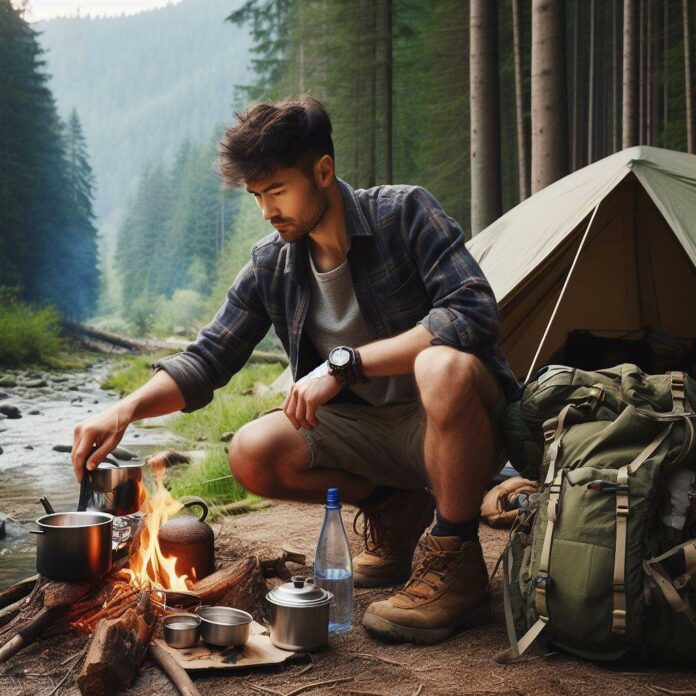Surviving in the great outdoors requires a set of essential skills that can mean the difference between life and death. Whether you’re an avid hiker, camper, or adventurer, knowing how to navigate through various challenges is crucial.
By mastering essential survival skills, you can embark on outdoor adventures with confidence, knowing that you have the knowledge to overcome challenges and keep yourself safe.
Join us as we explore each skill in detail and equip you for your next outdoor adventure.
Shelter Building

How to Construct Temporary Shelters
To learn how to construct temporary shelters in the wilderness, follow these simple steps:
- Gather materials: Begin by looking for branches, logs, leaves, or any other natural materials that can be used to build your shelter.
- Create a framework: Use large branches or logs as the foundation for your shelter’s basic structure.
- Add support: To ensure stability and support, place additional branches or logs diagonally across the framework.
- Fill in gaps: Use smaller branches, leaves, or other debris to fill in any gaps between the larger pieces of your shelter.
- Create a roof: Protect your shelter from rain and other elements by covering the top with large leaves, branches, or a tarp.
- Insulate the floor: Create insulation and a comfortable sleeping surface by using a layer of leaves or other soft materials.
- Test for stability: Give your shelter a firm shake or push against the walls to ensure it is secure and stable.
Always remember that constructing a shelter is crucial for survival in the wilderness. Your safety and protection from the elements should be your top priority. Take into account the weather conditions and terrain when selecting the location and materials for your shelter.
It’s also a good practice to build temporary shelters in different environments beforehand, so you’re well-prepared for any emergency situation.
Choosing the Right Location for Shelter
When choosing the right location for shelter in an outdoor adventure, consider the following:
- Choose high ground: Select a location that is elevated to avoid potential flooding or water pooling.
- Look for natural protection: Look for areas with natural barriers such as large trees, rock formations, or cliffs to provide shelter from wind and extreme weather.
- Avoid hazardous areas: Stay away from areas with potential hazards such as steep slopes, loose rocks, or dead trees that may pose a risk.
- Consider proximity to resources: Find a location that is close to essential resources such as water sources and firewood to ensure easy access.
- Ensure accessibility: Choose a location that is easily accessible and not too far from your base camp or trails to ensure convenience and safety.
By considering these factors, you can choose the right location for shelter and enhance your safety and comfort during outdoor adventures.
Fire Starting
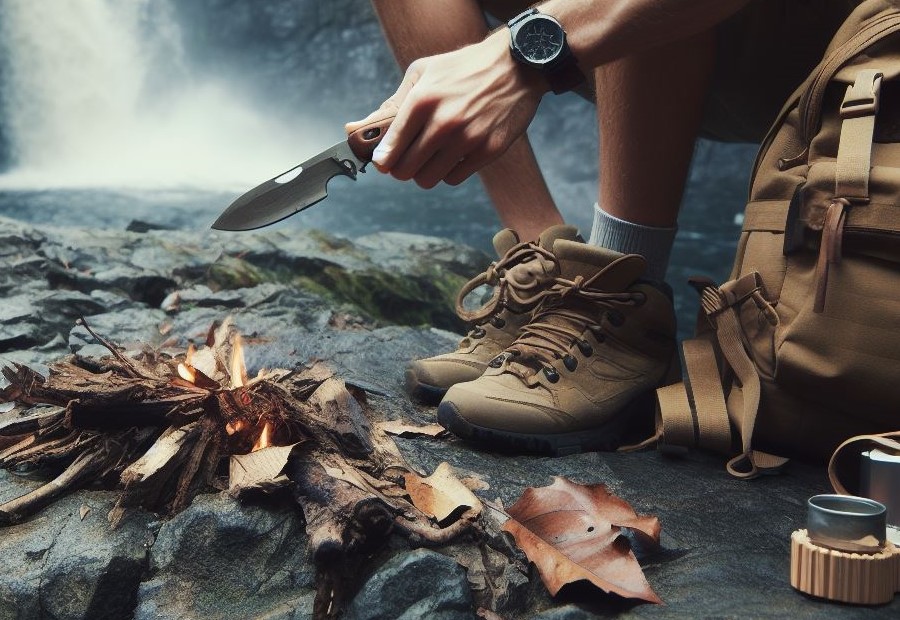
Different Methods of Starting a Fire
There are various methods you can use to start a fire in the wilderness. Let’s explore the different techniques:
- Friction-based methods: One option is the bow drill method, where you rotate a wooden bow against a fireboard to create friction and generate an ember. Another technique is the hand drill method, which involves rotating a wooden spindle on a fireboard using your hands.
- Spark-based methods: These approaches involve creating sparks to ignite tinder. A popular choice is using a ferro rod or fire starter, which generates sparks when scraped against a rough surface. Flint and steel can also be used by striking the steel against flint to create sparks.
- Solar methods: In sunny conditions, the power of the sun can be harnessed to start a fire. You can use a magnifying glass or a clear water bottle filled with water to focus sunlight into a small point and ignite tinder.
- Chemical methods: Certain chemicals can be employed to initiate a fire. For example, you can use potassium permanganate and glycerin to create a chemical reaction that produces heat and sparks.
Fire Safety and Control
When it comes to fire safety and control in outdoor adventures, it is crucial to follow these guidelines:
- Always choose a safe location for building a fire, ensuring it is away from any flammable objects or vegetation that could catch fire.
- Clear the area around the fire to create a buffer zone free from debris, leaves, and other potential fuels.
- Keep a sufficient supply of water nearby to extinguish the fire if necessary.
- Never leave a fire unattended and always fully extinguish it before leaving the area.
- Avoid building a fire in windy conditions as it can easily spread and become uncontrollable.
- Use proper fire-starting techniques such as using dry tinder, kindling, and firewood to establish a stable fire.
- Follow local regulations and restrictions, especially during fire seasons or in areas with a high fire risk.
- Keep a fire extinguisher or fire blanket on hand for quick access in case of emergencies.
- Ensure everyone in the group is aware of fire safety protocols and understands how to control and extinguish a fire.
By following these fire safety and control measures, you can minimize the risk of wildfires and ensure a safe outdoor experience.
Water Sourcing and Purification
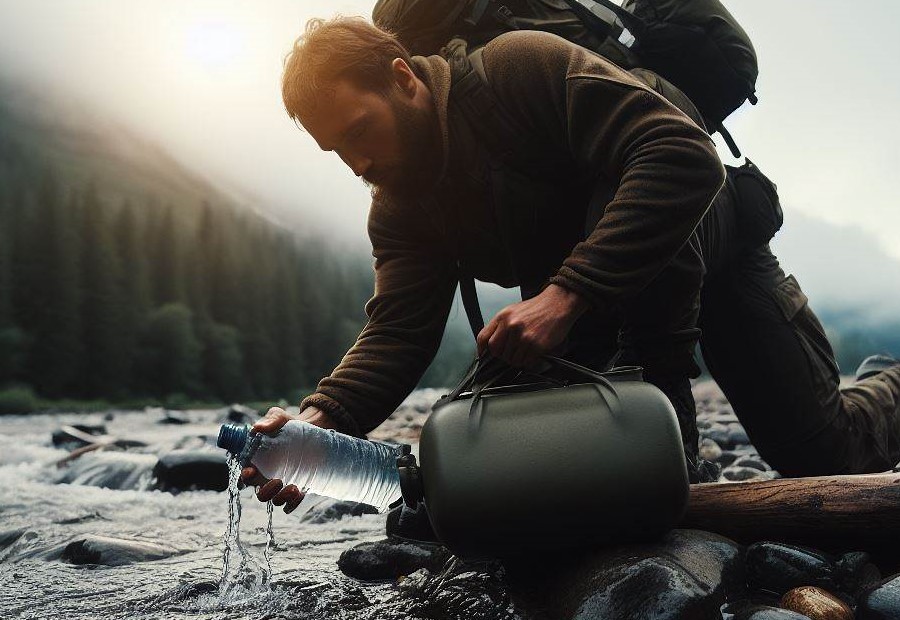
Identifying and Collecting Safe Drinking Water
To ensure you have access to safe drinking water in the wilderness, it is important to prioritize water safety and always be prepared. Follow these steps to identify and collect safe drinking water:
- Look for natural water sources such as rivers, streams, and lakes to find clean water.
- Check for signs of pollution or contamination, such as discoloration, strong odors, or floating debris, which can indicate unsafe water.
- Use your senses to evaluate the water’s clarity, taste, and smell before consuming it.
- Bring a water purification method, such as a water filter, purification tablets, or boiling water to make sure the water is safe to drink.
- If using a water filter, follow the manufacturer’s instructions for proper usage and maintenance to effectively remove contaminants.
- If using purification tablets, carefully read the instructions to ensure they are suitable for the volume of water you need to treat.
- If boiling water, make sure to bring it to a rolling boil for at least one minute to kill any pathogens present.
- Consider using a combination of methods for extra precaution to guarantee safe drinking water.
Remember, identifying and collecting safe drinking water is crucial for your health and well-being during outdoor adventures. Always be prepared with the necessary purification methods.
Techniques for Purifying Water in the Wilderness
When you find yourself in the wilderness and need to purify water for drinking, there are several techniques for purifying water in the wilderness that you can use:
- Boiling: Boiling water is one of the most effective techniques for purifying water in the wilderness. Bring the water to a rolling boil for at least one minute to kill any harmful bacteria or parasites.
- Chemical disinfection: Using water purification tablets or drops that contain chemicals like chlorine or iodine can kill most microorganisms in the water. Follow the instructions on the product packaging for the correct dosage and wait time.
- Filtering: A portable water filter can remove impurities and microorganisms from the water. Look for filters that have a pore size small enough to capture bacteria and protozoa.
- Solar disinfection: Fill a clear plastic bottle with water and place it in direct sunlight for at least six hours. The ultraviolet radiation from the sun will help kill pathogens in the water.
Remember, these techniques for purifying water in the wilderness are meant to complement each other. Combining multiple methods can further increase your chances of obtaining safe drinking water.
Navigation and Basic Map Reading

Mastering navigation and basic map reading skills is crucial for any outdoor adventure. In this section, we’ll uncover the secrets of using a compass and other navigational tool to confidently find our way in unfamiliar terrain.
We’ll also delve into the art of reading and understanding topographic maps, enabling us to unlock the hidden treasures of the great outdoors. Get ready to navigate like a pro and embark on unforgettable journeys with these essential survival skills.
Using a Compass and Navigational Tools
When it comes to outdoor adventures, using a compass and navigational tool is crucial. Here are some steps to help you successfully navigate:
- Understand how the compass works: Familiarize yourself with the compass, including the different components and how to read the directions.
- Align the compass with the map: Orient the map by placing the compass on it and ensuring that the North on the compass aligns with the North on the map.
- Find your current location: Use the compass to determine your position on the map by identifying prominent landmarks or using GPS coordinates.
- Choose your destination: Decide where you want to go and identify the direction on the map.
- Set your bearing: Rotate the compass housing until the orienting arrow aligns with the desired direction of travel.
- Hold the compass correctly: Keep the compass level, with the direction of travel arrow pointing straight ahead.
- Follow the bearing: Walk in the direction of the bearing while keeping an eye on the compass to stay on course.
- Periodically check your progress: Regularly check the compass and landmarks to ensure you’re heading in the right direction.
- Adjust for declination: If necessary, take into account the declination value for your location and adjust your compass reading accordingly.
By using a compass and navigational tool, you can confidently explore the outdoors and navigate your way through various terrains.
Reading and Understanding Topographic Maps
Topographic maps are essential tools for outdoor adventurers. Reading and understanding topographic maps are vital for navigation in the wilderness. These maps provide crucial information about the terrain, elevation, and geographical features of a particular area.
By analyzing contour lines, which depict the shape and steepness of the land, hikers can accurately gauge the difficulty of a trail or identify potential hazards or obstacles. The contour lines are close together when the terrain is steep and farther apart when it is flat.
In addition to contour lines, topographic maps also include symbols and colors that represent natural and man-made features such as rivers, roads, buildings, and vegetation. These symbols are helpful for familiarizing oneself with the surroundings, locating landmarks, and planning routes accordingly.
Incorporating these elements into the text effectively conveys the importance of reading and understanding topographic maps.
Mastering skills like reading and understanding topographic maps is crucial for anyone venturing into the great outdoors. Along with other essential skills such as shelter building, fire starting, and water sourcing, these skills ensure a safe and successful outdoor experience.
Foraging for Food
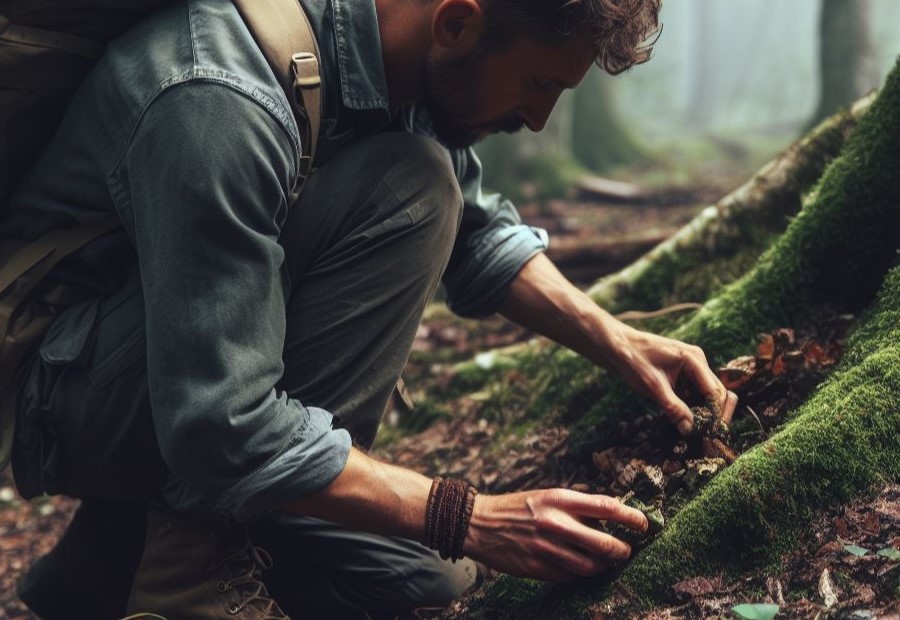
Identifying Edible Plants and Fungi
When it comes to outdoor adventures and survival skills, one skill that is crucial is the ability to identify edible plants and fungi. It is important to familiarize yourself with local plants and fungi that are safe to eat by conducting research through books, online resources, and expert consultations.
During your observation, pay close attention to characteristics such as color, shape, texture, and smell in order to accurately identify plants and fungi. Look for features like berries, leaves, or stems that can be easily recognizable.
To begin, it is advisable to start with a few well-known and widely recognized edible plants and fungi like dandelions, wild berries, or morels. However, always exercise caution and refrain from consuming anything unless you are completely certain of its identity.
Be aware that toxic plants and fungi may have similar appearances.
Prior to trying a new plant or fungi, it is recommended to test for allergies by conducting a small taste test and observing any adverse reactions. If you have allergies, it is best to consult with a doctor before trying any new foods.
When harvesting edible plants and fungi, ensure that you only take what you need and avoid causing damage to the environment. Additionally, make sure that the plants and fungi you collect are legally allowed to be harvested in the specific area.
Proper preparation is also essential for safety. By learning different cooking and processing techniques for edible plants and fungi, you can ensure that they are safe to consume.
Always remember that proper identification is crucial for your safety. Double-check your findings and consult with experts if you are unsure. Mastering the skill of identifying edible plants and fungi can provide you with an additional food source and enhance your self-reliance in outdoor environments.
Hunting and Trapping Techniques
When it comes to hunting and trapping techniques in outdoor adventure, it is important to possess the necessary skills and knowledge for success.
- Identifying game: Familiarize yourself with the different types of game animals in the area you are exploring. Learn about their habits, tracks, and signs to increase your chances of finding them.
- Choosing the right method: There are various hunting and trapping methods available, including firearms, bows and arrows, snares, and traps. Select the method that aligns with your skills and the regulations of the area.
- Setting up traps and snares: Proper placement and concealment of traps and snares are crucial for trapping success. Take into consideration the animal’s behavior and habits when positioning your traps.
- Camouflaging and scent control: Blend into the environment by wearing appropriate camouflage clothing and using scent control techniques to minimize your scent and avoid detection by game animals.
- Ethical considerations: Always follow ethical hunting practices, including shooting within your effective range, ensuring a clean and humane kill, and respecting hunting regulations and seasons.
Fact: Understanding the behavior and patterns of the game animals you are hunting or trapping can significantly increase your chances of a successful capture.
First Aid and Medical Skills
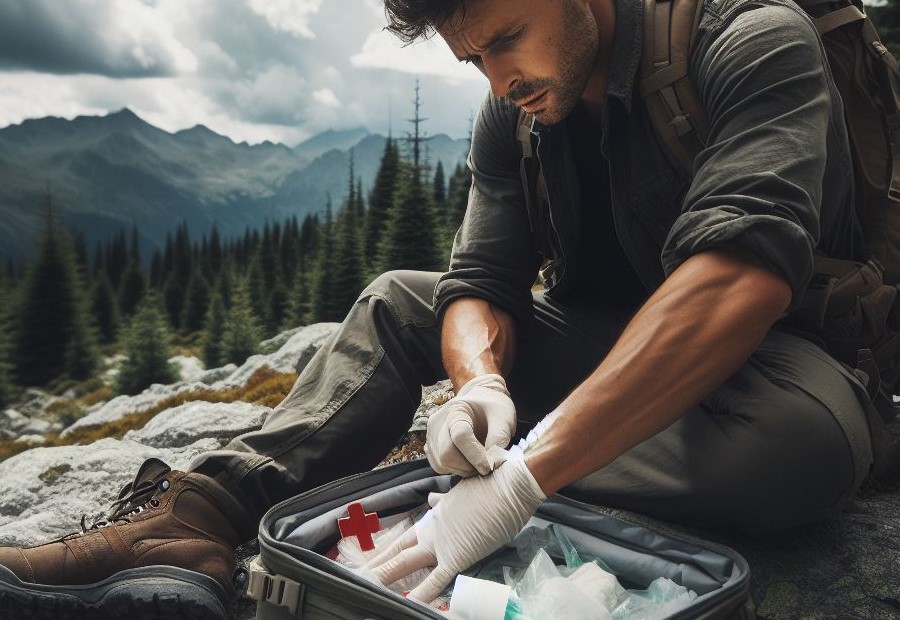
When you venture into the great outdoors, it’s crucial to be equipped with the right survival skills. From building a comprehensive first aid kit to learning how to treat common outdoor injuries, we’ve got you covered with the vital knowledge you need to ensure your well-being in the wild.
Get ready to become your own reliable source of medical aid!
Building a First Aid Kit
When it comes to preparing for outdoor adventures, building a first aid kit is an essential step. To ensure you’re fully equipped, include the following items in your kit:
- Bandages: Pack a variety of adhesive bandages in different sizes to cover cuts and wounds.
- Gauze: Don’t forget to include sterile gauze pads that can be used to dress larger wounds and stop bleeding.
- Antiseptic wipes: These are crucial for cleaning wounds and preventing infection.
- Tweezers: It’s always handy to have tweezers to remove splinters or ticks from the skin.
- Scissors: Carry a small pair of scissors to cut tape, clothing, or bandages as needed.
- Medical tape: Make sure to secure bandages and dressings in place with medical tape.
- Pain relievers: Over-the-counter pain medication should be included to help with headaches or minor aches.
- Antihistamines: These can come to the rescue for alleviating symptoms of allergies or insect bites.
- First aid manual: It’s important to have a pocket-sized guide that provides instructions on how to provide basic first aid.
- Medical gloves: Don’t forget to include disposable gloves to protect yourself and others when providing care.
Remember to regularly check and replace any expired items in your first aid kit. Customize the contents of your kit to cater to your specific needs and any pre-existing medical conditions you or your companions may have.
Having a properly stocked first aid kit not only brings peace of mind but also proves to be a valuable resource in emergency situations.
Treating Common Outdoor Injuries
To effectively treat common outdoor injuries, follow these steps:
- Assess the injury: Begin by evaluating the severity of the injury. Determine if it requires immediate medical attention or if it can be treated onsite.
- Clean the wound: If the injury involves an open wound, clean it thoroughly with clean water and mild soap. Gently remove any dirt or debris to prevent infection.
- Apply pressure: For wounds that are bleeding, apply direct pressure using a clean cloth or bandage to stop the bleeding. Maintain pressure until the bleeding subsides.
- Dress the wound: Once the bleeding has stopped, cover the wound with a sterile dressing or bandage to protect it from further contamination.
- Elevate and immobilize: If the injury involves a sprain or fracture, elevate the affected limb to minimize swelling. Use a splint or improvised support to immobilize the limb and prevent further injury.
- Apply cold compress: For injuries with swelling or inflammation, apply a cold compress or ice wrapped in a cloth to reduce swelling and alleviate pain. Do not apply ice directly to the skin.
- Monitor for infection: Keep a close eye on the injury for any signs of infection, such as redness, increased pain, swelling, or discharge. Seek medical attention if signs of infection develop.
- Pain management: Over-the-counter pain relievers, such as acetaminophen or ibuprofen, can be taken to manage pain. Follow the recommended dosage instructions.
- Seek medical help when necessary: If the injury is severe, does not improve with basic first aid, or involves broken bones or head trauma, seek professional medical assistance immediately.
By following these steps, you can effectively treat common outdoor injuries and ensure the well-being of yourself and others in outdoor adventure settings.
Signaling for Help
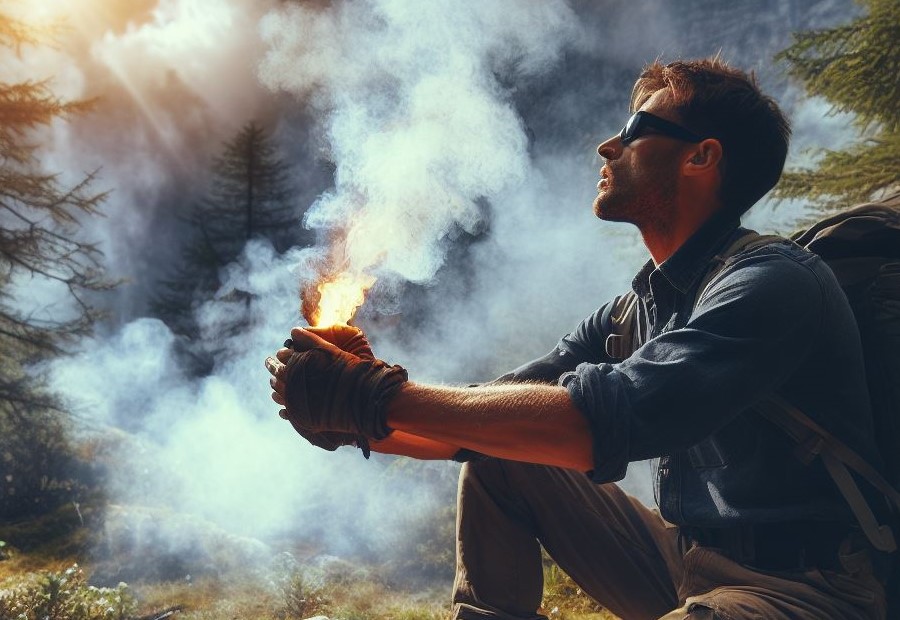
Wilderness Communication Techniques
When engaging in outdoor adventures, it is crucial to master wilderness communication techniques. These techniques include:
- Employing hand signals: Hand signals are invaluable when verbal communication is not possible, as they can convey simple messages and directions.
- Utilizing whistle communication: Carrying a whistle is essential for attracting attention and transmitting distress signals over long distances.
- Learning Morse code: Familiarizing oneself with Morse code is advantageous for communication via flashlight signals or other non-verbal methods.
- Using two-way radios: By employing two-way radios with predetermined channels and code words, adventurers can effectively communicate with group members or rescue teams.
- Utilizing signal mirrors: Signal mirrors are excellent for reflecting sunlight and creating flashes, making it easier to communicate with individuals in far-off locations.
- Creating smoke signals: Controlled smoke signals serve as a visual means of communication in remote areas.
- Employing flare signals: Flares are ideal for signaling distress and indicating the immediate need for assistance.
By incorporating these wilderness communication techniques, adventurers can effectively communicate with others in emergency situations or when non-verbal communication is necessary.
Using Signaling Devices
Incorporating signaling devices is essential in outdoor survival situations as it helps you attract attention and communicate with potential rescuers. Here are some effective methods for utilizing signaling devices:
- Whistles: It is important to carry a whistle with you and use short, loud blasts to attract attention. Blowing three short bursts serves as a universal distress signal.
- Mirrors: A small mirror can be utilized to reflect sunlight towards potential rescuers. Hold the mirror close to your face and aim it towards the target.
- Flashlights: Employ the SOS signal with a flashlight by turning it on and off in a pattern of three short, three long, and three short bursts. This is a recognized distress signal.
- Signal fires: Create a fire in an open area, away from flammable materials, and generate a thick column of smoke by adding green vegetation to the fire. This can be visible from a distance.
- Signal flags: If you possess brightly colored fabric or clothing, create a flag and wave it vigorously to catch the attention of rescuers.
- Personal locator beacons: These devices transmit a distress signal with your exact location to emergency services. Activate them in a clear open area for optimal signal transmission.
Remember to familiarize yourself with the specific operation instructions of any signaling devices you carry and utilize them only when necessary to conserve battery life. By correctly using these signaling devices, you enhance your chances of being spotted and rescued in an outdoor survival situation.
Frequently Asked Questions
What are the essential survival skills for outdoor adventure?
The essential survival skills for outdoor adventure include not panicking, using your wits, knowing how to start a fire, constructing a basic lean-to shelter, locating a water source, tying various knots, signaling for help, sharpening a dull knife, navigating without GPS, foraging for food, and having basic first aid skills.
What fire starting tools should I carry with me?
It is recommended to carry two fire starting tools with you. One should be on your person, such as a flint or strike igniter, and the other should be included in your gear. This ensures that you have a backup in case one fails.
How do I construct a basic lean-to shelter?
To construct a basic lean-to shelter, you will need a sturdy long branch or pole as the main support. Find a surface to lean the pole against, such as a tree or large rock. Use smaller branches or sticks to create a slanted roof, and cover the roof with leaves, moss, or a lightweight tarp for insulation.
How can I locate a water source in the wilderness?
Locating a water source in the wilderness can be done by looking for signs of running water, such as the sound of a nearby river or stream. You can also identify water drainage areas where water naturally collects or look for areas with lush vegetation which may indicate the presence of groundwater.
What are some useful knots to know for outdoor survival?
Knowing how to tie various knots is important for outdoor survival. Some useful knots to learn include the clove hitch for securing tent and tarp guy lines, the bear bag hang knot for keeping food away from animals, and the climbing knot for emergency situations where you may need to climb up a mountainside.
Why is it important to have basic first aid skills?
Having basic first aid skills is crucial for handling injuries in the wilderness. It allows you to take care of yourself or others in case of accidents or emergencies. Knowing how to properly treat wounds, make splints, and assess injuries can make a significant difference in a perilous situation.

